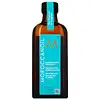What's inside
What's inside
 Key Ingredients
Key Ingredients

No key ingredients
 Benefits
Benefits

 Concerns
Concerns

 Ingredients Side-by-side
Ingredients Side-by-side

Aloe Barbadensis Leaf Juice
Skin ConditioningPanthenol
Skin ConditioningCreatine
Skin ConditioningHydrolyzed Quinoa
Skin ConditioningTocopherol
AntioxidantPersea Gratissima Oil
Skin ConditioningHydrolyzed Adansonia Digitata Seed Extract
Lavandula Angustifolia Flower/Leaf/Stem Extract
MaskingFoeniculum Vulgare Seed Extract
Skin ConditioningHelianthus Annuus Seed Extract
Skin ConditioningGlycerin
HumectantPEG-12 Dimethicone
Skin ConditioningWater
Skin ConditioningDicetyldimonium Chloride
EmulsifyingPolysorbate 20
EmulsifyingIsopropyl Alcohol
SolventSodium Phytate
Benzyl Alcohol
PerfumingEthylhexylglycerin
Skin ConditioningCitric Acid
BufferingChlorphenesin
AntimicrobialPhenoxyethanol
PreservativePotassium Sorbate
PreservativeSodium Benzoate
MaskingParfum
MaskingBenzyl Benzoate
AntimicrobialHexyl Cinnamal
PerfumingAloe Barbadensis Leaf Juice, Panthenol, Creatine, Hydrolyzed Quinoa, Tocopherol, Persea Gratissima Oil, Hydrolyzed Adansonia Digitata Seed Extract, Lavandula Angustifolia Flower/Leaf/Stem Extract, Foeniculum Vulgare Seed Extract, Helianthus Annuus Seed Extract, Glycerin, PEG-12 Dimethicone, Water, Dicetyldimonium Chloride, Polysorbate 20, Isopropyl Alcohol, Sodium Phytate, Benzyl Alcohol, Ethylhexylglycerin, Citric Acid, Chlorphenesin, Phenoxyethanol, Potassium Sorbate, Sodium Benzoate, Parfum, Benzyl Benzoate, Hexyl Cinnamal
 Reviews
Reviews

Ingredients Explained
These ingredients are found in both products.
Ingredients higher up in an ingredient list are typically present in a larger amount.
Parfum is a catch-all term for an ingredient or more that is used to give a scent to products.
Also called "fragrance", this ingredient can be a blend of hundreds of chemicals or plant oils. This means every product with "fragrance" or "parfum" in the ingredients list is a different mixture.
For instance, Habanolide is a proprietary trade name for a specific aroma chemical. When used as a fragrance ingredient in cosmetics, most aroma chemicals fall under the broad labeling category of “FRAGRANCE” or “PARFUM” according to EU and US regulations.
The term 'parfum' or 'fragrance' is not regulated in many countries. In many cases, it is up to the brand to define this term.
For instance, many brands choose to label themselves as "fragrance-free" because they are not using synthetic fragrances. However, their products may still contain ingredients such as essential oils that are considered a fragrance by INCI standards.
One example is Calendula flower extract. Calendula is an essential oil that still imparts a scent or 'fragrance'.
Depending on the blend, the ingredients in the mixture can cause allergies and sensitivities on the skin. Some ingredients that are known EU allergens include linalool and citronellol.
Parfum can also be used to mask or cover an unpleasant scent.
The bottom line is: not all fragrances/parfum/ingredients are created equally. If you are worried about fragrances, we recommend taking a closer look at an ingredient. And of course, we always recommend speaking with a professional.
Learn more about Parfum